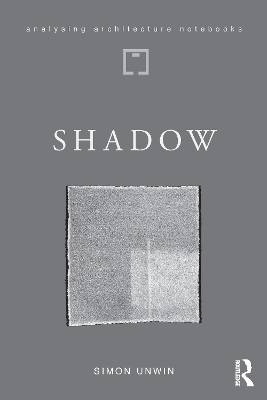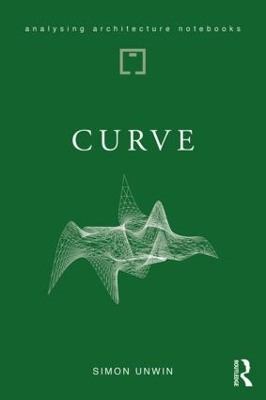Analysing Architecture Notebooks
4 total works
Each of these Analysing Architecture Notebooks is devoted to a particular theme in understanding the rich and varied workings of architecture. They can be thought of as addenda to the foundation volume Analysing Architecture, which first appeared in 1997 and has subsequently been enlarged in three further editions. Examining these extra themes as a series of Notebooks, rather than as additional chapters in future editions, allows greater space for more detailed exploration of a wider variety of examples, whilst avoiding the risk of the original book becoming unwieldy.
Shadows may be insubstantial but they are, nevertheless, an important element in architecture. In prehistoric times we sought shade as a refuge from the hot sun and chilling rain. Through history architects have used shadows to draw, to mould form, to paint pictures, to orchestrate atmosphere, to indicate the passing of time … as well as to identify place. Sometimes shadow can be the substance of architecture.
Each of these Analysing Architecture Notebooks is devoted to a particular theme in understanding the rich and varied workings of architecture. They can be thought of as addenda to the foundation volume Analysing Architecture, which first appeared in 1997 and has subsequently been enlarged in three further editions. Examining these extra themes as a series of Notebooks, rather than as additional chapters in future editions, allows greater space for more detailed exploration of a wider variety of examples, whilst avoiding the risk of the original book becoming unwieldy.
Metaphor is the most powerful component of the poetry of architecture. It has been a significant factor in architecture since the earliest periods of human history, when people were finding ways to give order and meaning to the world in which we live. It is arguable that architecture began with the realisation of metaphor in physical form, and that subsequent movements – from Greek to Gothic, Renaissance to Modern, Victorian to Vernacular… – have all been driven by the emergence or rediscovery of different metaphors by which architecture might be generated.
Each of these Analysing Architecture Notebooks is devoted to a particular theme in understanding the rich and varied workings of architecture. They can be thought of as addenda to the foundation volume Analysing Architecture, which first appeared in 1997 and has subsequently been enlarged in three further editions. Examining these extra themes as a series of Notebooks, rather than as additional chapters in future editions, allows greater space for more detailed exploration of a wider variety of examples, whilst avoiding the risk of the original book becoming unwieldy.
Curve is a divisive issue in architecture. Some see curves as expensive and decadent; others as an expression of transcendence – a way that the human mind can express its freedom from quotidian constraints. Yet others use curves to emulate some of the most beautiful forms in nature. This Notebook considers the various authorities to which architects look for the generation of their curves. It also considers the aspirations curves manifest in architectural form.
Each of these Analysing Architecture Notebooks is devoted to a particular theme in understanding the rich and varied workings of architecture. They can be thought of as addenda to the foundation volume Analysing Architecture, which first appeared in 1997 and has subsequently been enlarged in three further editions. Examining these extra themes as a series of Notebooks, rather than as additional chapters in future editions, allows greater space for more detailed exploration of a wider variety of examples, whilst avoiding the risk of the original book becoming unwieldy.
As children we make places spontaneously: on the beach, in woodland, around our homes… Those places are evidence of a natural language of architecture we all share. Beginning with the child as seed and agent of the places it makes, initial sections of Children as Place-makers illustrate the key ‘verbs’ that drive that natural language of architecture. Later sections look at the core importance of the circle of place, how as children we are drawn to inhabit boxes, and the narrative possibilities that arise when place is linked with imagination. The principal messages of this Notebook are that it is by place-making we make sense of the space of the world in which we live, and that the first step in becoming a professional architect is to re-awaken the innate architect inside each of us.



